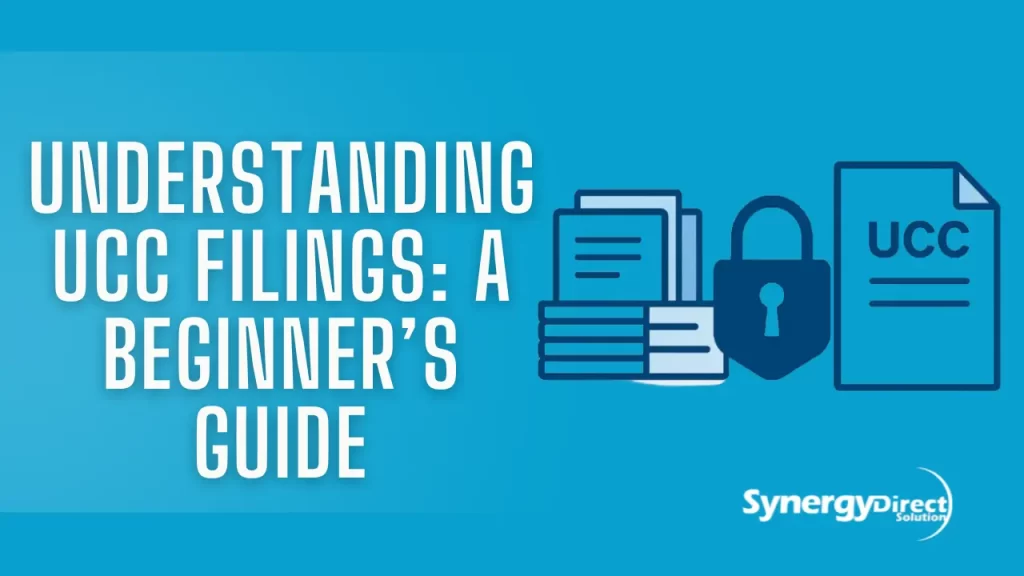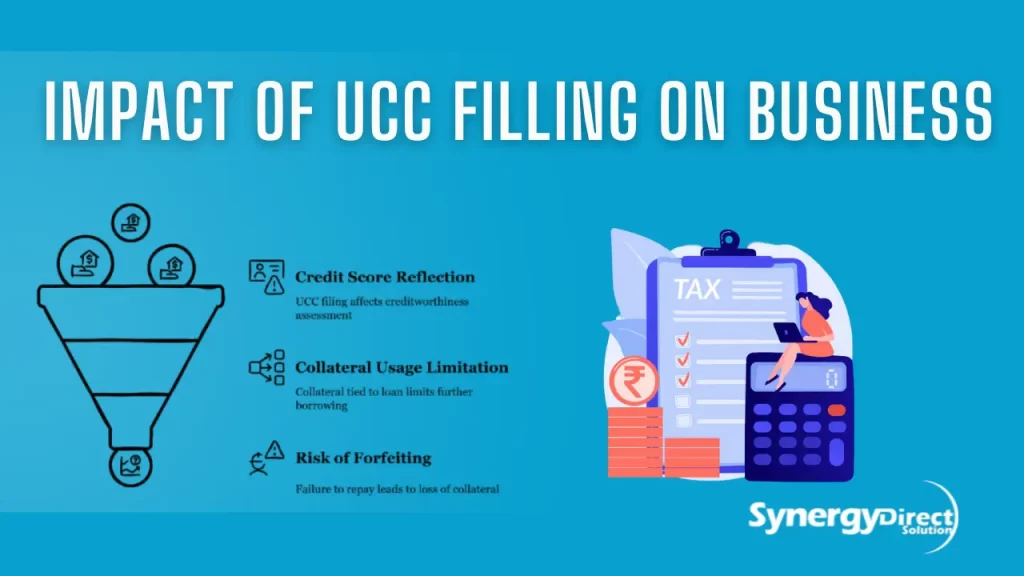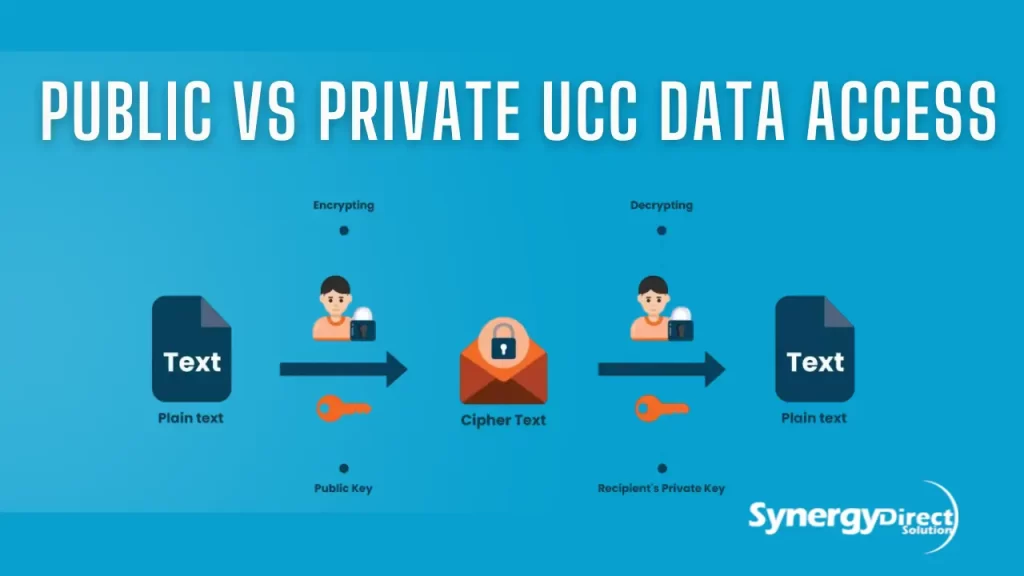Understanding UCC Filings: A Beginner’s Guide
A UCC filing, short for Uniform Commercial Code filing, is a legal form that creditors use to indicate a lien on personal or business assets. These filings are commonly used when a borrower takes out a loan and the lender wants to secure their interest in the borrower’s collateral. Filed with the Secretary of State in the relevant state, UCC filings are public records that can impact financing and credit eligibility.
In simple terms, if you’ve ever financed equipment or taken a business loan, there’s a good chance a UCC filing was involved. Whether you’re a business owner, startup founder, or curious consumer, understanding UCC filings is crucial to navigating commercial credit relationships.

In this beginner’s guide, we’ll explore the essentials of UCC filings, how they work, why they’re important, and what they mean for your business or finances. Let’s break it down.
What Is a UCC-1 Form?
A UCC-1 form, also known as a UCC-1 financing statement, is a legal document used by a creditor to give public notice that they have a security interest in a debtor’s personal property. This form is filed under the Uniform Commercial Code (UCC) and is a vital part of securing a loan involving business assets such as equipment, inventory, or accounts receivable. When a lender and borrower enter into a secured loan agreement, the lender uses the UCC-1 form to “perfect” their interest—meaning they formally claim rights to the collateral in case the borrower defaults.
The UCC-1 form includes three main elements:
- Debtor’s name and address – This identifies who owes the debt.
- Secured party’s name and address – This identifies the lender or entity claiming the security interest.
- Collateral description – This outlines the specific assets being used as security, which could include tangible items (like machinery) or intangible assets (like intellectual property or future receivables).
Once completed, the UCC-1 is filed with the Secretary of State in the debtor’s home state or the state where the collateral is located. This filing makes the security interest publicly searchable, helping establish priority among other lenders or creditors. In legal terms, the lender who files first typically has the first claim on the collateral, a concept known as “first in time, first in right.”
The UCC-1 form remains active for five years unless it’s continued, amended, or terminated with a UCC-3 form. For lenders, it provides legal protection, and for borrowers, it can help access funding while still retaining possession and use of the secured assets.
How a UCC Filing Impacts Your Business?
A UCC (Uniform Commercial Code) filing can have significant implications for your business, as it serves as a public record of your secured transactions. When a business files a UCC, it’s typically to establish a legal claim on certain assets in the event of default or non-payment by a borrower or debtor. This filing impacts your business in several key ways.
First, it provides a legal framework for securing loans and credit by allowing creditors to take a claim on specific assets, such as inventory or equipment, as collateral. This can make it easier for your business to secure financing, as lenders have reassurance that they can recover their funds in case of default.
However, a UCC filing can also impact your business negatively. For example, it may affect your creditworthiness, as creditors will view the filing as an indication of your current obligations. It also becomes part of the public record, making it accessible to competitors, potential partners, or other third parties who might use the information when assessing your financial stability. If not handled carefully, a UCC filing can signal financial distress, potentially making it more difficult to secure future funding or enter into business partnerships.
In addition, multiple UCC filings can create a complicated web of liens on your business assets, which may complicate the process of selling the business, applying for new loans, or dealing with bankruptcy issues.

Difference Between UCC-1, UCC-3, and Amendments
Understanding the differences between UCC-1, UCC-3, and amendments is crucial for anyone involved in secured lending or business financing. Each of these forms serves a distinct purpose within the Uniform Commercial Code (UCC) framework, helping lenders manage and maintain their legal rights to collateral used to secure loans.
UCC-1: The Initial Financing Statement
The UCC-1 financing statement is the original document filed by a secured party (lender) to publicly declare a security interest in a debtor’s personal or business property. It is essentially the starting point for a UCC filing and includes:
- The debtor’s name and address
- The secured party’s name and address
- A description of the collateral being pledged
Once filed, the UCC-1 provides legal notice to other creditors, establishing priority in case of debtor default. This filing is typically valid for five years, unless continued or terminated.
UCC-3: Follow-Up Actions to UCC-1
The UCC-3 form is a follow-up document used to modify or manage an existing UCC-1 filing. It supports several important actions, such as:
- Continuation – Extends the UCC-1’s validity beyond five years. Must be filed within six months before the original UCC-1 expires.
- Termination – Filed when the debt is fully paid, releasing the lender’s claim on the collateral.
- Assignment – Transfers the secured interest to a new lender or party.
- Amendment – Updates details in the original UCC-1 filing, such as the debtor’s name or the collateral description.
UCC-3 ensures that the public record stays accurate and up to date, and that creditor rights remain legally protected.
Amendments: A Subcategory of UCC-3
Amendments are a specific type of filing under the UCC-3 form. They’re used when the original UCC-1 information changes, but the underlying security interest still exists. Common amendment scenarios include:
- Changing the debtor’s name due to a business name change or merger
- Correcting errors or typos in the original filing
- Updating or clarifying the collateral description
- Adding or removing specific collateral items
Unlike continuations or terminations, amendments do not reset the original filing date and do not extend the term of the financing statement.
How Does a UCC Filing Work?
A UCC filing works as a public legal notice that a creditor has an interest in a debtor’s personal or business assets. The process starts when a lender (also called the secured party) files a UCC-1 financing statement with the appropriate state agency—usually the Secretary of State’s office in the state where the borrower (the debtor) is located. This filing identifies both the lender and the borrower and includes a description of the collateral securing the loan, which can range from equipment and inventory to accounts receivable or even future assets.
Once filed, the UCC-1 statement establishes the lender’s priority position on the collateral. This means that in the event of a default or bankruptcy, the lender with the earliest valid UCC filing typically has the first right to seize or sell the assets to recover their loan. The filing acts as a public declaration to other creditors that the borrower’s assets are already pledged, which helps avoid disputes over asset ownership and protects the lender’s interest.
UCC filings are valid for five years, after which they must be renewed through a UCC-3 continuation statement if the loan is still active. Lenders can also use UCC-3 forms to amend or terminate the original filing if the debt is paid off or if collateral details change. This entire process is crucial in commercial lending because it formalizes and records the relationship between borrower and lender, offering legal protections to both parties.
Where to File and How to Search UCC Records
Filing and searching UCC (Uniform Commercial Code) records is a key part of managing business loans and verifying security interests. These records are public and available for both creditors and borrowers to review. Understanding where to file and how to search for UCC filings can help businesses maintain transparency, verify liens, and ensure that lenders’ rights are properly recorded and traceable.
Where to File UCC Records
UCC filings are typically submitted through the Secretary of State’s office in the state where the debtor is located. This location is considered the “central filing office” under UCC law.
🔹 Filing Rules Based on Debtor Type:
- For individuals: File in the state of their legal residence
- For businesses (LLCs, corporations): File in the state where the business is legally registered or incorporated
🔹 Methods of Filing:
- Online Filing: Most Secretary of State websites offer digital submission portals.
- Mail or In-Person: Paper forms (usually UCC-1 or UCC-3) can be submitted by post or hand-delivered.
- Via Third-Party Services: Legal and business service providers can file UCCs on your behalf, often for a fee.
Some states may also allow county-level filing for specific types of property (like fixtures), but this is less common than state-level central filing.
How to Search UCC Records
Searching UCC records is a public right and an essential step for:
- Lenders evaluating collateral
- Businesses verifying if assets are encumbered
- Buyers or investors doing due diligence
🔹 Steps to Search UCC Records:
- Visit the Secretary of State Website
Go to the Secretary of State’s UCC search portal for the relevant state. Each state has a slightly different interface. - Enter Debtor’s Name
You can search by:- Individual name (Last, First)
- Business name (as registered)
- Individual name (Last, First)
- Review Search Results
The search will return:- UCC-1 filings
- UCC-3 amendments (continuations, terminations, etc.)
- Filing dates and document numbers
- Details about collateral and secured parties
- UCC-1 filings
- Download or Request Copies
Many states offer downloadable PDFs. Some may charge a small fee for official or certified copies.
🔹 Tips for Effective UCC Searches:
- Use exact legal names; spelling matters in search accuracy.
- Search in all states where a business operates or is incorporated.
- Check for lapsed filings or inactive liens that may still appear.
- Look for termination statements to confirm debts are fully resolved.
Comparison Table: Filing vs. Searching UCC Records
|
Action |
Filing UCC |
Searching UCC |
|
Who Does It |
Secured party (lender) |
Any party (public access) |
|
Where to Go |
Secretary of State’s office |
Secretary of State’s website |
|
Method |
Online, mail, or in person |
Online database (usually free) |
|
Required Info |
Debtor, secured party, collateral |
Debtor name |
|
Purpose |
Record claim to collateral |
Verify existing liens |
Why It Matters
- For creditors, filing ensures legal protection and lien priority.
- For borrowers, searching confirms no unknown claims on assets.
- For investors or buyers, UCC searches are critical during mergers, acquisitions, or asset purchases to avoid inherited liabilities.
In summary, UCC filings are made with the Secretary of State in the debtor’s home state, and UCC searches are conducted through the same office. Accurate filings and searches are vital for verifying ownership rights, protecting secured interests, and making informed financial decisions.
Public vs Private UCC Data Access
When it comes to UCC (Uniform Commercial Code) data access, there are significant differences between public and private access. Public UCC data refers to filings and information that are available to anyone, often through state or federal databases. This data is typically related to secured transactions and liens, making it accessible for public scrutiny and due diligence purposes.
Public UCC data is often used by creditors, lenders, and businesses to assess the financial stability of a company or individual. On the other hand, private UCC data access refers to information that is restricted and available only to certain individuals or organizations with proper authorization. This may include sensitive details about business transactions, financial obligations, or personal assets that are protected by privacy laws.
Private access is essential for entities that require confidential or exclusive information, such as legal professionals, government agencies, or specific business partners. Both public and private access to UCC leads data plays a crucial role in facilitating transparency, protecting privacy, and supporting informed decision-making within the business and legal environments

Conclusion
In conclusion, understanding UCC filings is essential for anyone involved in business transactions, especially when securing loans or evaluating collateral. Whether you’re a business owner, lender, or investor, knowing how UCC filings work, including the differences between UCC-1, UCC-3, and amendments, can help protect your interests and ensure that legal claims on assets are properly recorded. Filing and searching UCC records are critical steps in maintaining transparency and verifying the financial stability of a business. By understanding the public and private access to these records, businesses and individuals can make more informed decisions and avoid potential legal disputes.
